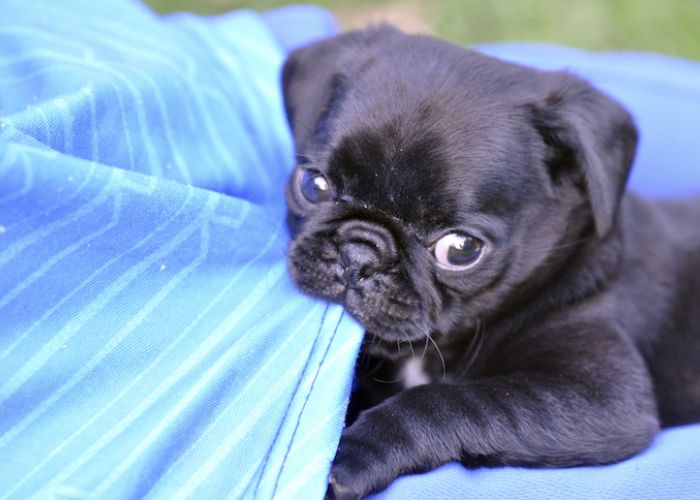Dogs are amazing friends who make our lives more comfortable and joyful. Occasionally, though, they might pick up bad habits like gnawing through clothing. This habit often leads to destroyed clothes and puts our pets’ health in jeopardy, which may be expensive and annoying. This in-depth post will examine the causes of this inclination and provide some helpful advice on how to encourage a dog to quit eating clothing. Let’s read below ”How to Stop a Dog From Eating Clothes”.
Understanding the Reasons Behind Clothes Chewing
It’s important to comprehend why dogs behave this way before discussing the answers. The best line of action is to determine the underlying cause of your dog’s clothing chewing habit, as there are multiple reasons for this behaviour.
- Teething: During the teething stage, puppies in particular may chew through their clothes. Puppies feel pain as their adult teeth erupt, just like human babies do, but chewing soothes the pain.
- Boredom: When dogs are left alone for long periods of time, they may develop destructive habits to pass the time, including chewing on clothing.
- Anxiety or Stress: Dogs who are nervous or stressed out may use chewing on clothing as a coping mechanism. Moves to new locations or the addition of family members can cause this behaviour or other disturbances in the home.
- Lack of Exercise: A dog that does not receive enough exercise may exhibit excessive enthusiasm and boredom, which may cause it to seek stimulation in other ways, such as by chewing on clothes.
- Exploration and Play: Dogs investigate their surroundings with their jaws. For play or because a fabric has a special touch or smell, they could be drawn to it.
How to Stop a Dog From Eating Clothes
Now that we know a few possible causes of garment chewing, let’s look at some helpful techniques to stop it.
Preventive Measures
- Provide Adequate Toys: Make sure your dog has access to a range of safe-material chew toys. Make sure the toys you select are appropriate for their chewing style and size. To keep your dog’s toys engaging and intriguing, rotate them periodically.
- Puppy-Proof Your Home: Clothing and other valuables should be kept out of your puppy’s reach during the teething stage. Try utilising baby gates or crate training to restrict your puppy’s access to specific rooms in the house.
- Establish a Routine: Because dogs thrive on consistency, make sure to feed, exercise, and walk them on a daily basis. A dog’s feelings of boredom and hyperactivity will drop when they get enough exercise, which will discourage negative conduct.
Training Techniques
Positive Reinforcement:
Techniques for providing positive reinforcement are an excellent method to acknowledge and honour good behaviour. Reward your dog with toys, food, or praise once they stop chewing on garments.
By establishing a pleasant association, positive reinforcement helps your dog repeat the desired behaviour.
Teach the “Leave It” Command:
Teach your dog to comply with the “leave it” order. Start with less expensive products and work your way up to clothing.
Treat your dog anytime they obey; this will instill in them the polite habit of leaving clothing alone.
Redirect Attention:
If you see your dog chewing on clothing, redirect their attention to a toy or pastime that is more appropriate.
They can quit chewing on their clothes by routinely redirecting their attention.
Desensitization Training:
Give your dog clothes, but do so gradually and under close supervision. Praise children who behave quietly around clothes.
By doing this, you can lessen the chance that your dog will think of garments as chew toys and help desensitise them to their existence.
Environmental Modifications
Use Bitter Sprays or Repellents:
To prevent your dog from chewing, apply repellents or sprays that have a bitter flavour to your clothing. Although these items taste terrible, dogs can safely utilise them.
To make sure the spray won’t harm the fabric, test it first on a discrete, little portion of the clothing.
Closet and Laundry Room Management:
Closets and laundry rooms should be locked to keep your dog from getting to clothing.
If you put your dirty clothes in a covered hamper, your dog won’t be able to rummage through and chew them.
Invest in Chew-Resistant Clothing:
Think about investing in long-lasting, chew-resistant dog clothes.
While it doesn’t immediately address the problem, this can lessen the harm that chewing clothes can bring.
Health Considerations
Regular Vet Check-ups:
Make an appointment for routine veterinary examinations to make sure your dog’s chewing behaviour isn’t the result of any underlying medical conditions.
Overeating can sometimes be a sign of dental problems, intestinal problems, or malnutrition.
Provide Mental Stimulation:
Mental stimulation is more vital than physical exercise. Use interactive games, puzzle toys, and training sessions to stimulate your dog’s thinking.
A dog that receives cerebral stimulation is less likely to participate in destructive actions, such chewing on clothes.
Conclusion
Preventive steps, training methods, environment adjustments, and consideration for your dog’s physical and mental well are all necessary to stop a dog from eating clothing. You need to be persistent and patient with your pet to break the behaviour. Understanding the causes of clothing chewing and putting these practical suggestions into practise can enable you and your beloved pet live in a peaceful environment. I hope you like reading ”How to Stop a Dog From Eating Clothes”.
